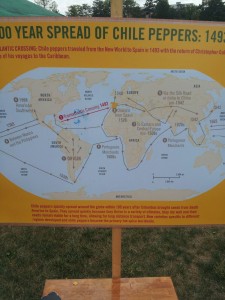If any readers saw one of my previous posts about coffee, you’re familiar with the fact that I’m not a huge fan of bitterness. So in my quest to seem like a child, I’ll also mention that I hold the same feelings towards beer. In fact, before the tour I enjoyed a nice tall glass of chocolate milk in the dining hall. That’s not to say, however, that I don’t like any grown-up drinks. I can enjoy a wine, cider, or liquor with the best of them. But give me a beer, be it cheap or gourmet, and I’ll probably wince like a kid who convinced their parent to let them try a sip of beer for the first time. That being said, my dad somehow found this blog the day he found out I was going to be living in Rose house. Seeing previous posts about brewery tours, he did his best to enthuse me that I needed to go if I ever got the opportunity. So, go I did.
Like anyone you hate talking to at a party, I was way more interested in the process of making beer than the result. For anyone who’s previously been to a beer tour, or seen the posts of the several of other scholars who’ve gone, you’ll know that most of the process takes place in large metallic vats. The process is started from imported barley, hops, and yeast, making them effectively liquid bread. Then in the vats, the mixtures are mashed, lautered, fermented, boiled, and finally packed into the bottles we see them in as beer. With so many steps, it takes a long time to brew a batch of beer. And for each type of beer being made, all the machines need to be meticulously cleaned, in order to ensure none of the tastes end up mixing. For that reason, they stuck to one type of beer a day. And each batch produced a guestimated amount of about 80 barrels, or about 3,200 gallons. The products bottled and set on a conveyor belt to be packaged at a rate of 81 bottles a minute. That sounds pretty high, but there are two workers, both with two hands. Assuming both hands are used, they really only need to handle a bottle about every 3 seconds, per hand. Like I said, I’m not that fun at parties.
At the end of the tour, we got the chance to try both a double IPA and a pumpkin beer. This was a special treat for me, because out of all the beers I’ve tried in my life, those were two types of beers that I can say I liked the least. Knowing this, I tried them anyway, and tried to hide my disgust from the tour guide. From purchases made by my family, I know their are people who like those beers, but I know I’m not one of them.

 rest of the event unimpeded.
rest of the event unimpeded.